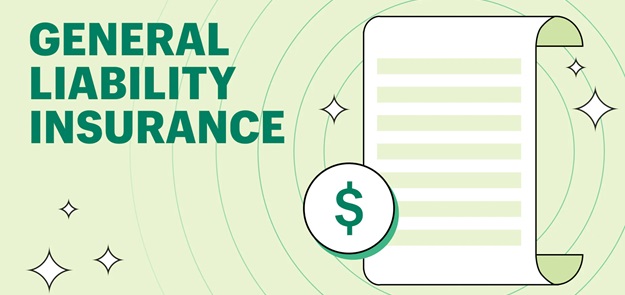Businesses must have general liability insurance. It pays for costs related to claims like injuries or property damage. Knowing how to file a claim ensures the problem is fixed quickly and with as little trouble as possible for the business. This guide will show you how to get through the process soon.
Understanding General Liability Insurance
General liability insurance keeps companies from losing money due to other people’s claims. It covers many things like injuries to people or property damage and personal injuries. Businesses of all sizes need this insurance because it protects their finances and gives them peace of mind.
This insurance can help pay medical bills and legal fees if a customer slips and falls in your store. Knowing what your policy covers and doesn’t cover is essential. Being aware of your coverage helps you handle risks better and make smart choices about how to run your business.
Initial Steps After An Incident
After an accident, everyone is safe first. Take care of any immediate dangers to stop more damage. Take pictures, videos and witness statements to record what happened entirely. Tell the right people like clients and employees what happened.
Taking these first steps is very important for ensuring your claim is supported. Correct documentation helps establish facts and backs up your case. Communication with stakeholders at the right time builds trust and openness which is essential for keeping business relationships strong during the claims process.
Reviewing Your Insurance Policy
It is essential to read your insurance policy carefully to know what it covers. List the types of incidents covered and the policy limits and exclusions. These details help determine if your claim is valid and how much coverage you have. That is the amount you must pay out of pocket before your insurance starts to pay. You won’t be surprised during the claims process if you understand these terms. It also ensures you follow all the policy rules so your claim won’t be denied because of misunderstandings or missed details.
Contacting Your Insurance Company

As soon as possible after an accident, call your insurer. Use the information in your policy documents to get in touch. Give vital details about the event like the date, time and place and provide a short description. Reporting on time is crucial because delays can make the claims process harder. Most insurers have strict rules about when claims must be made. If you meet these deadlines your claim could be allowed. Being transparent from the start also shows that you want to solve the problem quickly which can help the outcome of your claim.
Filling Out The Claim Form
Get the claim form from your insurance company. Please fill it with correct and complete information. Information about the policyholder details about the incident and a description of the damage or injury are standard. Make sure to make common mistakes like leaving out parts or dates. Before sending the form ensure all its information is correct by carefully reading it. A claim form that is correctly filled out speeds up the process and lowers the chance of delays. Checking your work twice reduces mistakes and increases the chances of a good outcome.
Gathering And Submitting Supporting Documentation
You should gather all the proof you need to support your claim. Reports from the police medical records repair estimates and photos are some examples of this. Make sure all the papers you use are legible and clear. Send these things to the insurance company with your claim form. Documentation that is correct shows what happened and backs up your claim. It also helps the claims adjuster get a good picture of what is going on. Sending in complete and on time paperwork can significantly speed up the claims process.
Working With The Claims Adjuster
The claims adjuster looks into the claim to see if it is true and how much it covered. They could go to the crime scene, talk to witnesses and review documents. Keep the lines of communication open and honest with the adjuster. Give all requested information promptly. The adjuster job is essential to the outcome of the claim. Working with the adjuster and being honest with them can make the process go more smoothly and lead to a better settlement. You should be ready to answer questions and give more proof if asked.
Following Up On Your Claim
Check your claim progress regularly. Track everything you tell the insurance company. Check with your insurance company to see if there are any delays or if you need more information. Regularly following up on your claim keeps it on track and shows how hard you’ve worked. It is helpful to keep detailed records in case of disagreements or problems. Proactive follow up can speed up the claims process and ensure the problem is solved on time.
Resolving Disputes And Appeals
Insurance companies may not pay your claim or offer a lower settlement which could lead to a dispute. Carefully read over the reason for the denial or the settlement offer. Put together more proof or paperwork to back up your case. If you believe the decision is unfair you can appeal it. Learn how to file an appeal with the insurance company and do it carefully. It takes patience and persistence to settle disagreements. A successful appeal chance can increase if you prepare well and talk clearly.
Settlement And Payment
Once the claim is approved you should know how the settlement process works. Check the settlement offer to make sure it covers all the losses. If you think the offer isn’t enough try to negotiate. Once a deal is made the insurance company will send the money. As part of the settlement process all parts of the claim are put to rest. Make sure you know what the settlement says. Negotiating and accepting the offer promptly can speed up the payment process.
Conclusion
Companies must know how to file a general liability insurance claim to run their businesses. This guarantees a quick resolution and keeps problems to a minimum. Follow these steps to have a smooth claims process, know what your policy says and keep the lines of communication open with your insurer. Claims management that works well keeps your business safe and your finances stable.

